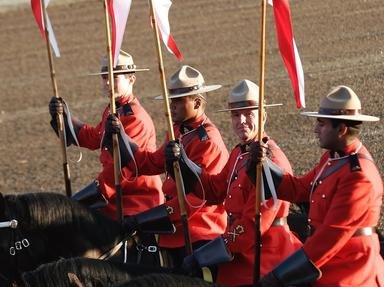Quiz Answer Key and Fun Facts
1. When HMS 'Pegasus' sailed into Halifax harbour in 1786, her captain, the Duke of Clarence, wasn't on a royal tour, he was working. Nevertheless, he was the first member of a European royal family ever to visit British North America. Upon the death of his brother he ascended the throne to became 'The Sailor King' - for only seven years. Which one of these kings was he?
2. The Duke of Kent was stationed in Quebec in 1791 as colonel of the 7th Foot. Then, from 1793 to 1798, he was based in Halifax as Commander of the Forces of Nova Scotia and New Brunswick and in 1799 was appointed commander-in-chief of British forces in North America. In 1798 they named a future province after him. Which one?
3. In 1860, every little town in British North America visited by the Prince of Wales knew how to celebrate a royal whistle-stop, but unfortunately, most of the most popular ways of showing patriotic enthusiasm have faded with time. What's the only one of these once-common things a royal might meet with on a Canadian tour today?
4. The artistic Duchess of Argyll resided in Canada from 1878-1883 and as a princess, was honoured with both a Canadian province and a lake in that province, as namesakes. Oddly, the province and the lake have different names. What was the name of the province?
5. In 1901, the Duke and Duchess of Cornwall and York undertook a massive round-the-world Empire tour that included an Atlantic-to-Pacific and back again train trip of Canada. It was the first time a future monarch had travelled so far by rail and it was the first railway in Canada that you could go so far on. What's the railway line?
6. Royalty in Canada has always been associated with the military, and none more so than with this pretty and lively granddaughter of Queen Victoria. While her father was serving in Canada as Governor General, she was named colonel-in-chief of one of the most distinguished Canadian regiments. That was in 1914, and she remained in that post until her death in 1974. What is the regiment in question?
7. It was 1919 and Edward, Prince of Wales was on his first cross-Canada tour. Triumphal arches were thrown up all over the country to greet yet another glamorous young royal. He liked Canada a lot, Canadians adored him and on this tour he did a few things that no other member of the British royal family had ever done in Canada before. You've got four choices below, so choose the thing he did NOT do!
8. Edward, Prince of Wales and his brother the Duke of York toured Canada in 1926 to mark Canada's diamond jubilee. A notable stop was in Toronto where they presided at the opening of the 'Princes' Gates', at the entrance to vast grounds that host of one of Toronto's largest annual events. What's the event the Gates open onto?
9. "It is now some 46 years since I first came to this country [Canada] with the King, in those anxious days shortly before the outbreak of the Second World War. I shall always look back upon that visit with feelings of affection and happiness. I think I lost my heart to Canada and Canadians, and my feelings have not changed with the passage of time." The feeling was mutual. Who was the long-lived lady who spoke those words?
10. Not all the royals visiting Canada have been from the United Kingdom. On January 19, 1943, little Princess Margriet Fransciska was born at Ottawa Civic Hospital, making her the only European royal ever to have been born in Canada. Where were her parents from?
11. Princess Elizabeth and Prince Philip toured Canada for the first time in 1951 with great success. One less pleasant aspect this trip was large-scale coverage in the press of a particularly scary aspect of royal tours that never seemed to have concerned the general populaton before. What was the big issue that had become front-page news?
12. Queen Elizabeth II visited Charlottetown, Québec and Ottawa in 1964. While she was delivering a speech at the National Asssembly in Québec City, something pretty unpleasant was going on outside. The event became known as 'Samedi de la matraque'. What happened?
13. When Queen Elizabeth and Prince Philip visited Canada in 1976, they weren't just royals. They were also a proud mom and dad who'd brought the family to watch their kid compete in the Olympic Games, held that year in Montréal. Which one of their children was this?
14. The endless reception lines, the weird food, the children's choirs, the long sits in uncomfortable seats, working double shifts ... despite the rigors, the Windsors have always made touring look easy and fun. Well, almost all of them. What member of the royal family was reported as looking 'bored' on tour of Canada in 1983?
15. In the old days when royalty travelled by train and ship, tours were longer but far more leisurely. Nowadays there is little 'down time' and visiting royals pop from place to place to time zone over thousands of miles in a matter of hours. So when Prince William and Princess Kate were touring Canada in 2011, they were given a whole day off. What did they choose to do with it?
Source: Author
annaheldfan
This quiz was reviewed by FunTrivia editor
bloomsby before going online.
Any errors found in FunTrivia content are routinely corrected through our feedback system.

